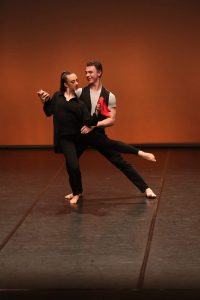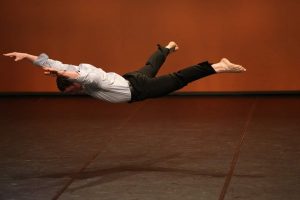Watching dance performances was once a predictable affair characterized by narrative plots, ornate costumes, theatrical set design, a classical score, and movement that either was or followed the traditions of ballet.
 But these days, seeing dance can, at times, feel as though you need a personal translator to make sense of what’s going on. Let’s start with a “simple” question. What is contemporary dance? This word is mainly used in major dance hubs in the entire world.
But these days, seeing dance can, at times, feel as though you need a personal translator to make sense of what’s going on. Let’s start with a “simple” question. What is contemporary dance? This word is mainly used in major dance hubs in the entire world.
It can be used to refer to all kind of dances between hip-hop to tribal dance ritual but usually it refers to a dance that was born in the middle of the 20th century when important pioneers catalysed and redefine dance, this time not anymore through hard and complex schemes and canons, but through their own vision of movement. They approached their mind to a new way of dancing, to a new way of expressing our souls.
Isadora Duncan was one of the most important modern dancers of 20th century, thanks to her bizarre vision of movement. Isadora belonged to the dance movement named “free dance” that was the really first revolutionary act against Ballet dance.
I need now to mention Martha Graham, she is still now one of the most important icons of contemporary dance. She was the mother of the Marta Graham method, the first technique that took the revolutionaries ideas of the 20th century of modern dance pioneers and involved them in an articulated code of gestures, where prioritizing expressive movement over narrative elements was the important thing. Thanks to her contemporary dancers dance without any kind of shoes, she thought that ballet slippers don’t let us feel the ground energy.
The innovations of Duncan and Graham created space for other experimentations.
Sidestepping the teachings of Graham, her student Merce Cunningham created his own technique, that is the one that we study in our school.
He and John Cage were lifelong collaborators, and in the same way that the composer redefined music as sound, Cunningham redefined dance as movement. He integrated seemingly ordinary movements into his works and played with elements of chance, while stripping away the necessity of a musical backdrop. These explorations suggested that dance could be anything.
In the meanwhile with this largely white experimental dance community in the U.S., choreographer and dancers like Alvin Ailey gave a voice to African Americans. His innovative choreography condensed different styles like modern dance, ballet, and black cultural currents in the United States, such as jazz, blues, and gospel music.
By the end of the 1900 Anne Teresa De Keersmaeker, imposed everyday movements into her works, employing pattern, repetition and speed, giving a provocative perception to the public.
How can we approach contemporary dance?
 I think it is really fun to find different approaches to viewing dance, a lot of them may initially seem illegible to untrained eyes, and I need to underline that also if you are the most important and best dancer in the world your eyes will be never trained enough, and you will always find something impossible to understand.
I think it is really fun to find different approaches to viewing dance, a lot of them may initially seem illegible to untrained eyes, and I need to underline that also if you are the most important and best dancer in the world your eyes will be never trained enough, and you will always find something impossible to understand.
Recognize ourselves in dance in very challenging but it can help us to bring down this barrier between what we are expecting to see and what we actually see. To build this we need to approach dance in a different way; we need to understand that contemporary dance is a two-way conversation that should, if we let our souls to it, engage all our senses,
We tend to search for a meaning in what we see and feel, because our education says “everything has a reason” and “nothing happens by chance”.
But this doesn’t work, because dance is like our first love, we don’t know exactly what is going on but, we know exactly that something in us is going on.
“We are moving bodies, and dance makes that more evident than ever”.
Oscar Tempesti, 5 A Coreutico



